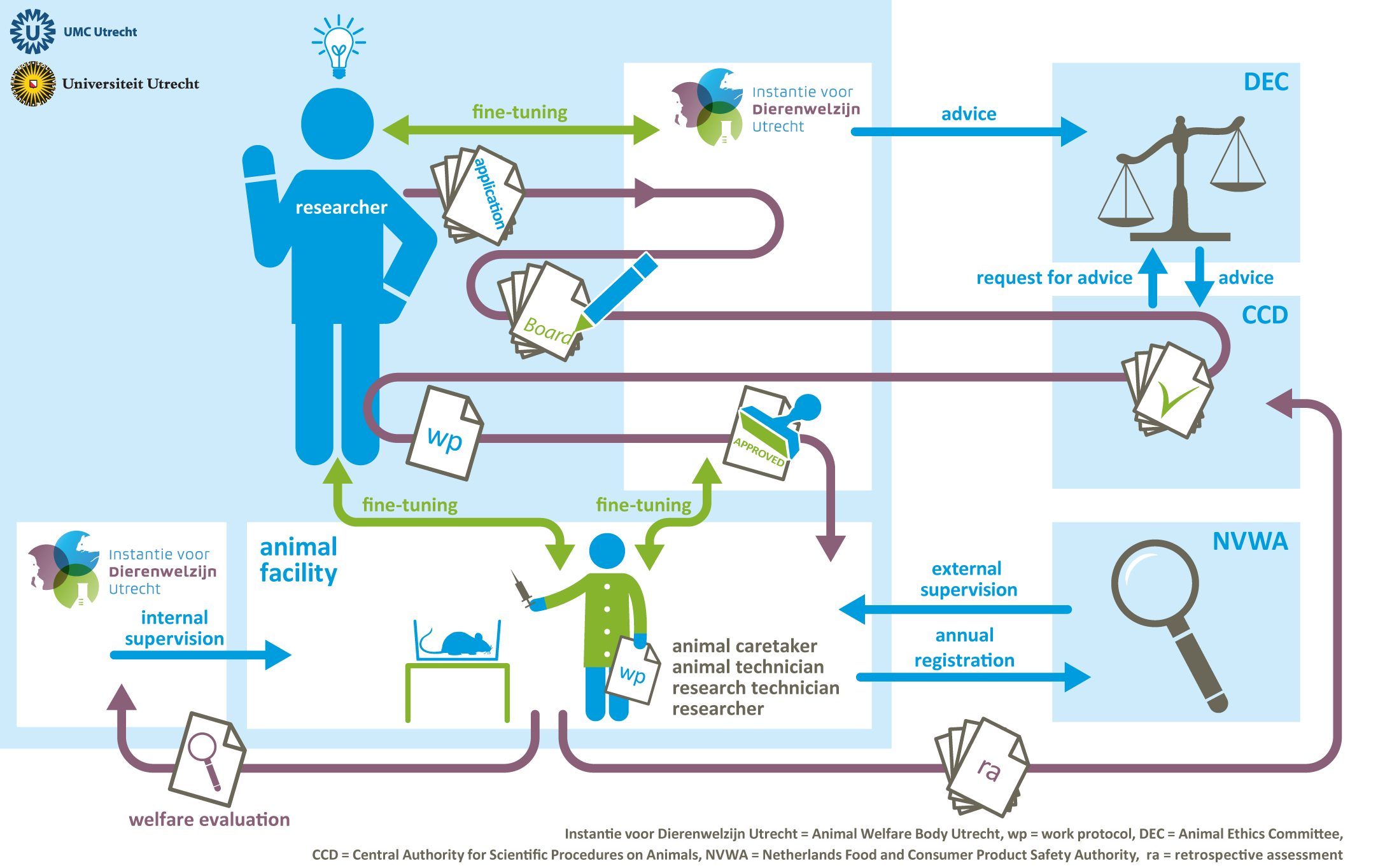Annual Report on Animal Experiments
English summary
This is the English summary of the 2024 Annual Report on Animal Experiments by Utrecht University and the University Medical Center Utrecht (UMC Utrecht). It provides information about the use of laboratory animals by the two institutions.
This publication was prompted in part by the Dutch Code for Transparency in Animal Testing. It is one of the many tools we use for being transparent about experiments on animals. For example, there are the very informative websites of the Animal Welfare Body Utrecht and the 3Rs Centre Utrecht.
Accountability
At Utrecht University and UMC Utrecht, research in the life sciences (both veterinary and medical-biological) is carried out. Animal experiments are conducted in addition to experiments based on, for example, cell and tissue culture techniques, computer simulations and experiments on human volunteers. Laboratory animals are also used for education and training. All animal use is performed with great care, under supervision of the Utrecht Animal Welfare Body.
Not, unless...
The Dutch Experiments on Animals Act (2014) stipulates that animal experiments may only be carried out if there is really no other option ("not, unless..."). That is, only if there is no animal-free way to achieve the same goal (Replacement). The point of departure is that animals can experience positive and negative emotions and have an intrinsic value. If animal use is inevitable, it is mandatory to see whether that animal experiment can be improved with respect to Reduction of the number of animals and Refinement by, for example, improvement of housing, supervision and procedures. This rule has been elaborated into a set of requirements and steps to take.
From idea to animal experiment

Figures
The number of laboratory animals does not equal the number of animal experiments, since on the one hand animals have been re-used in other experiments, and on the other hand animals were bred as laboratory animals without being used in experiments. Both numbers are kept as low as possible.
Number of animal experiments

Trend in the number of animal experiments

Utrecht University
Trend animals used in education

Utrecht University
Purpose
58% of the animal experiments were conducted for fundamental research: research into processes, such as research into the functioning of organs. In fundamental research, the way research outcomes will be applied is not yet clear. 25% was conducted for applied research and translational research. Applied research is research that is directly aimed at an application, for example a specific medical therapy. Translational research connects fundamental and applied research, and often includes translation from results of animal research to clinical application for humans. Finally, laboratory animals are used in education and training, for example in veterinary and laboratory animal science courses (14%). About 2% related to breeding of animals with a harmful phenotype and 1% related to protection of the environment.
Animal species
For each research project, the most suitable animal species is used. Around two-thirds of the experiments are conducted with mice. In addition to mice, rats were also used frequently. Other animals used in experiments and education are chickens, pigs, cattle, horses, zebrafish, pigeons, dogs, cats, sheep, rabbits, goats and ferrets.
Discomfort
Discomfort is the legal term for all negative experiences that laboratory animals experience through animal experiments. It is mandatory to classify discomfort into the categories of mild, moderate and severe discomfort, or non-recovery (the animal dies during anesthesia having had no previous discomfort). A permanent effort is being made to keep discomfort levels as low as possible.
Mild: 46%
Moderate: 40%
Severe: 5%
Non-recovery: 9%
Unlike in other European countries, animals that are killed for their tissues are classified as animal experiments in the Netherlands. These animals fall under the 'Mild' category, and 38% of all animal experiments in this category belong to this specific subcategory.


 English summary
English summary